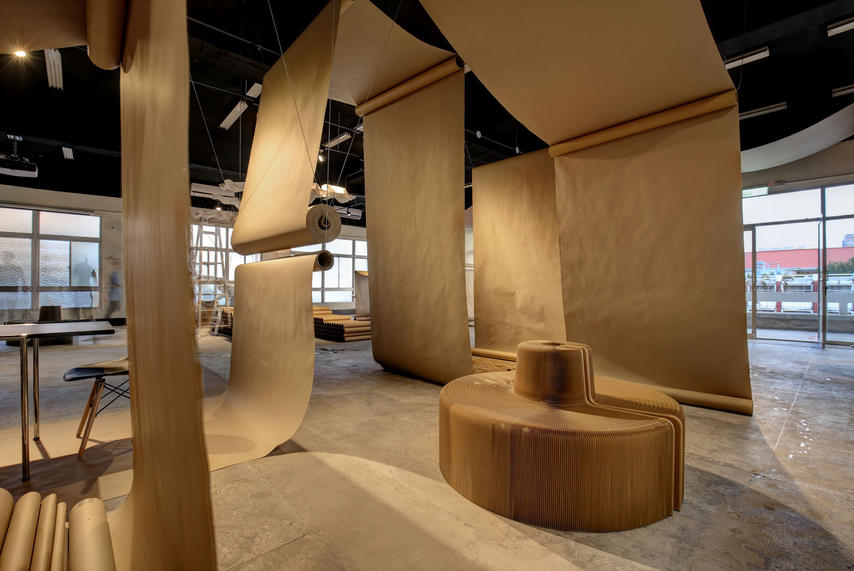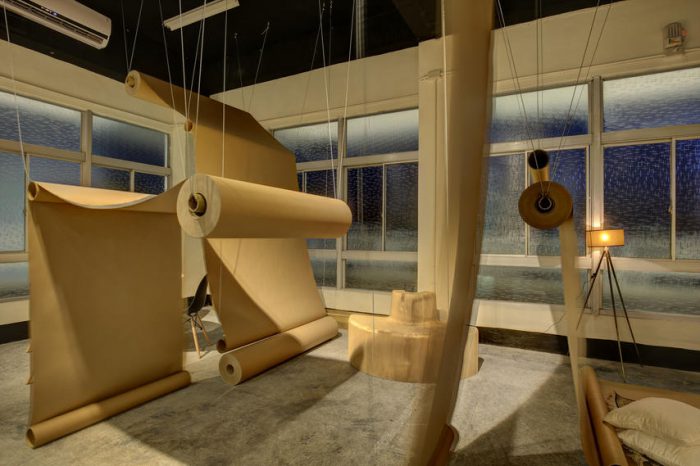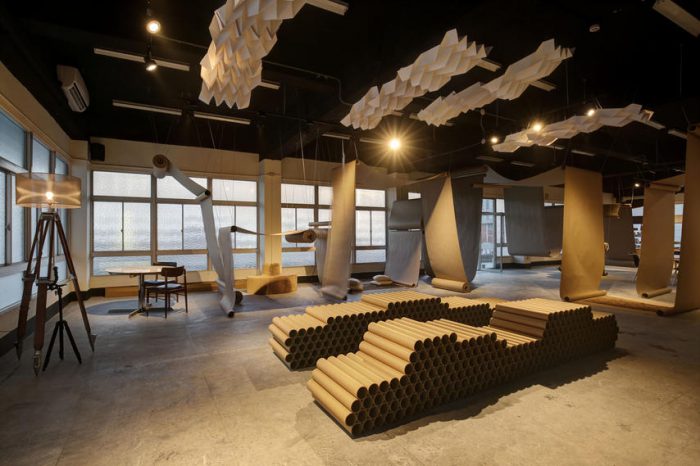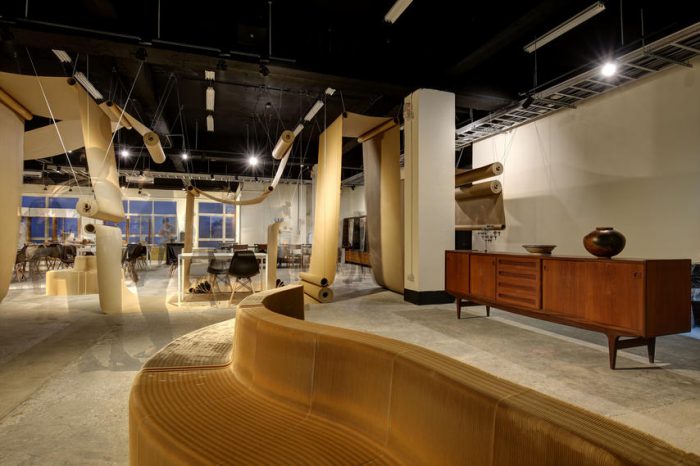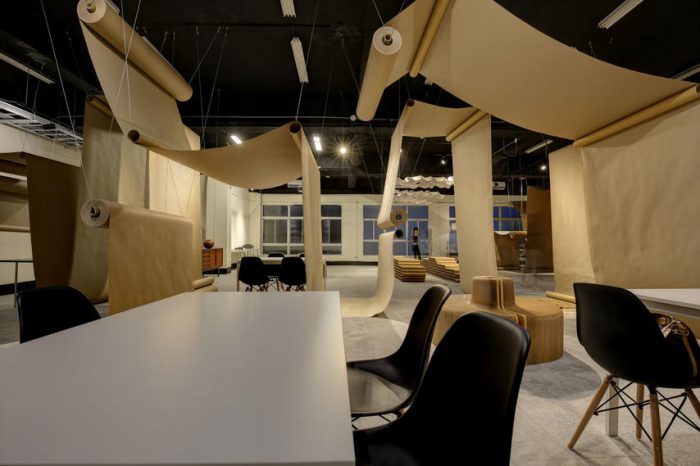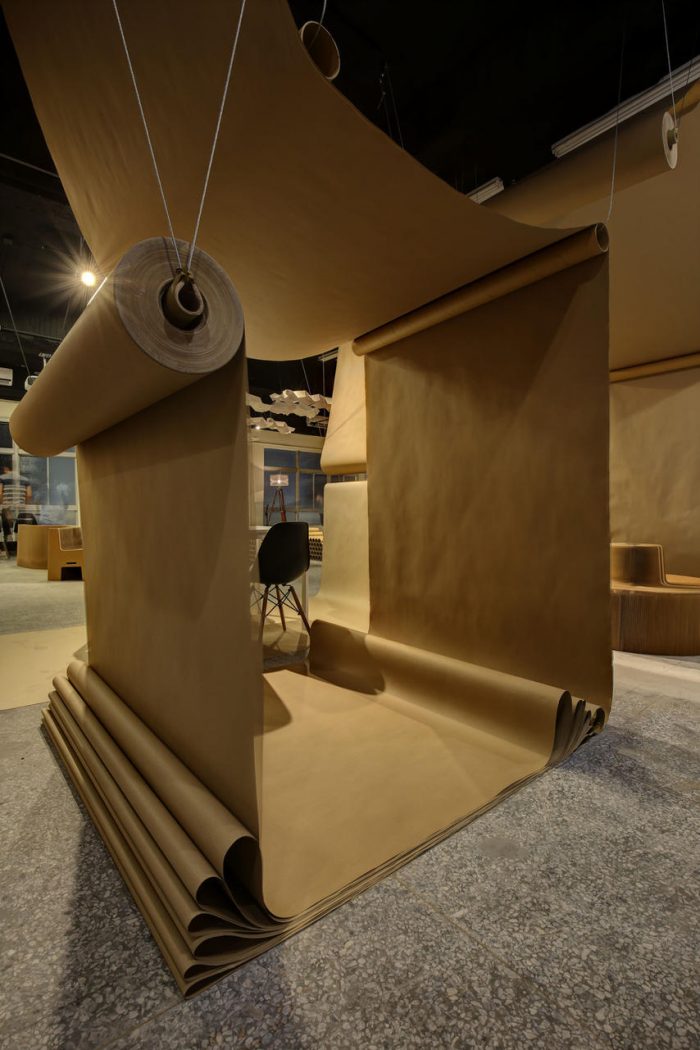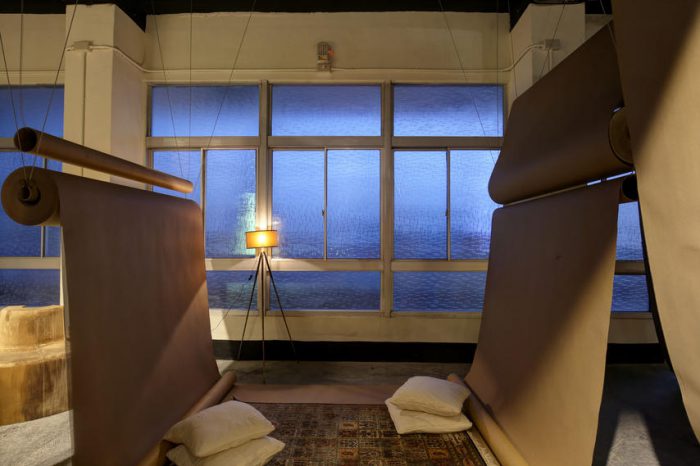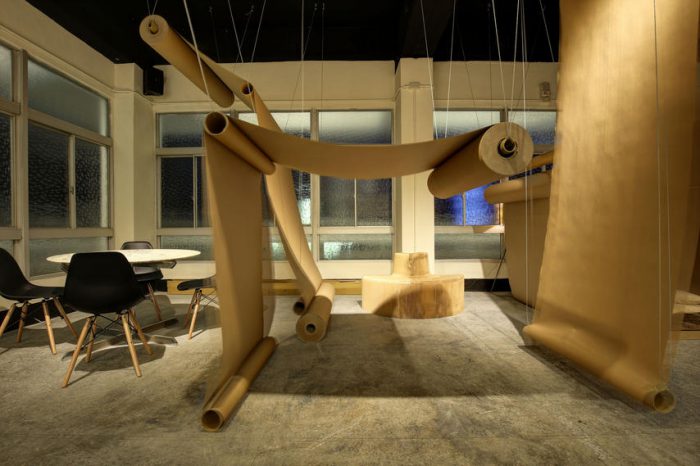客户与设计师接洽,设计了一个多用途的咖啡厅和会议空间,通过其简单性和功能激发灵感和影响力。
The designers were approached by the clients to design a multi-purpose cafe and meeting space that would be inspiring and impactful through its simplicity and function.
不是使用普通的硬表面将空间划分为所需的区域,而是明显地脱离由地板,墙壁和天花板编制的空间的整合,悬浮的纸张三维地流动以形成贯穿的连续性和灵活的边界。卷筒悬挂在各种高度和距离上,以创造隐私,通道,以及用餐,休息,休息或玩耍的不同设置。
Rather than using common hard surfaces to compartmentalize the space into the required areas, while also stepping away from the conformity of space compiled by floor, wall, and ceiling distinctly, the suspended papers flow three-dimensionally to form continuity and flexible boundaries throughout. The rolls are hung in various heights and distances to create privacy, passage way, as well as different settings for dining, lounging, resting, or playing.
该体验旨在邀请用户打破习惯并重新思考如何使用空间。当纸张从一端卷起并展开到另一端时,可以操纵和改变有趣的表面。因此,纸张成为一个简单的工具,形成环境,有效地记录空间的演变,同时创建记忆作为一个集体整体,其中用户是关键属性。
The experience is meant to invite the users to break habits and re-think how the space can be used. The playful surfaces can be manipulated and transformed as the paper is rolled and unrolled from one end to another. As a result, paper became a simple tool that forms the environment and effectively records the evolution of the space, while creating memories as a collective whole, in which the users are the key attributes.
HappierCafé/ Paper Space重新定义了社区作为一个共享的,不断发展的项目的想法。该设计希望在展览时间之外的社区生活。利用客户的互动来物理地改变空间,颠覆了典型的咖啡馆体验。它允许客人为更深层次的社区形成实践做出贡献,并在超出该空间的物理时间之外对个人产生持久影响。
Happier Café/Paper Space redefines the idea of community as a shared, ever-growing project. The design wanted to have a life in the community beyond its exhibition time. Using the customer’s interaction to physically alter the space inverts the typical café experience. It allows guests to contribute to a deeper practice of community formation and creates a lasting impact on individuals beyond the physical time spent in the space.
Design: JC Architecture
Photography: Zach Hone (Paper Space) / How Chan (Paper Wonderland)

